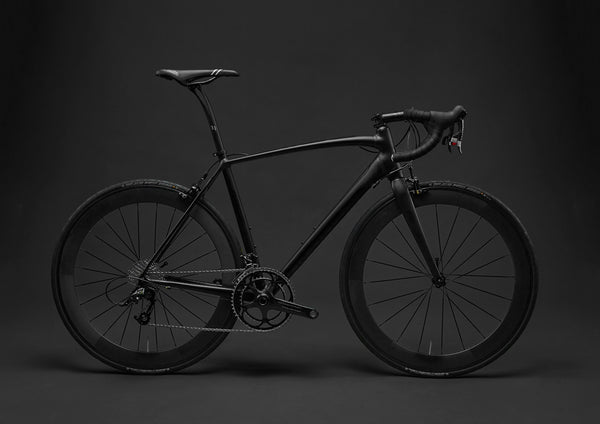The most important decision you have to make for your road riding pleasure is choosing a road bike that will suit your style and terrain. Though there are a lot of brands and several different categories of dropbar road bikes, most road bikes are pretty good at doing a variety of things, which makes how to choose a road bike more a process of zeroing in on your priorities.
Types of Road Bikes to choose from
In general, we’d divide road bikes into three primary categories: racing, endurance, and all-road. There is naturally overlap among the bikes in these three categories, but thinking about road bikes along these lines can help when you are thinking about how to pick a road bike.
Racing bikes
Racing bikes are those types of bikes that you are seeing being used in major professional races like the Tour de France and Giro d’Italia. In such a tech-oriented sport, one advantage of having brands focus a great deal of their R&D to make bikes for the pros, is that there will be a trickle-down effect with technology. That means that most brands will have several levels of racing bikes in their collection, with a variety of price points from the most expensive to more moderately priced offerings.

Modern racing bikes will certainly be hugely focused on aerodynamics, so you will find frames in this category with deep section, aero tubing and a super slim front profile, to help the bike cut through the wind and smooth out the airflow as it passes along the bike and rider.
It used to be that aero-oriented frames would be much heavier and more uncomfortable than round-tubed, less aero bikes, but with advancements in materials and production processes, many brands are able to make aero and lightweight bikes that are still quite comfortable for longer days in the saddle. Brands like Pinarello were at the forefront of having an aero/lightweight bike all in one.
Speaking of weight, racing bikes invariably must be lightweight. The lighter the bike, the easier it is to use when climbing, though the race-ready geometry will also play a role in how the bike handles on climbs as well as descents. As a rule, the geometry for a racing bike will be much more aggressive than a touring or endurance-oriented bike, with a longer reach and steeper drop. This type of set up will encourage a more responsive ride, but could compromise long distance comfort, especially to anyone who is new to the sport or perhaps is not very flexible. That’s because a more aggressive geometry can stress the back and core muscles.
So when you are choosing a road bike, if you plan on entering races and want to have the fastest, most responsive bike possible, then you will want to look at the types of top level racing bikes from brands like Colnago, Pinarello, Time, Chapter 2, Bianchi and Wilier.
Endurance bikes
Most brands that make racing bikes also lavish the same love and attention on designing bikes made for more endurance-oriented riding. When buying an endurance bike, you are choosing a road bike intended for longer rides at slightly slower speeds. These bikes can be used for riding centuries with friends or even bikepacking adventures where you will be carrying equipment to get you through overnight or multi-day adventures.

The main difference you’ll find with endurance-oriented bikes compared to racing bikes is the geometry will be more laid back and less aggressive. The reach will typically be shorter with a higher stack. That will help the rider get into a slightly more upright position when sitting in the saddle. It’s a position that requires less flexibility and core strength since the rider will not be required to lean so far forward. Though it is perhaps less aerodynamic, it’s a position that will allow the rider to be in the saddle for hours without straining or causing discomfort.
The materials used for endurance bikes can vary somewhat compared to racing bikes. Though carbon is ubiquitous among top level racing bikes, in addition to carbon endurance frames, you will find materials such as titanium and steel still popular. That is a result of the extra level of comfort well-made Ti and steel bikes can offer. And no matter the material used, endurance bikes will pay special attention to being able to absorb road chatter to reduce fatigue after many hours in the saddle.
With multi-day, bikepacking adventures in mind, endurance bikes will frequently come equipped with integrated bosses and mounting points so that you can easily attach racks to carry travel bags and mud guards to reduce road spray in wet weather that almost inevitably will impact a multi-day tour.
The lovely thing about bikes designed for longer tours is that they are still quite snappy when you want to put some power through the pedals. So if you feel like the occasional race or timed Gran Fondo, you can certainly have your endurance-oriented bike from Colnago, Look, Wilier, or any of the other road bike frames Wrench Science offers do double duty.
All-Road
Though bikes that can handle poor roads have existed almost from the start of bicycle design, All-Road is a fairly new category. Essentially, it is a mix of the two categories above with the added spice of being able to handle light gravel or seriously poor road conditions.

When you are choosing a road bike, it’s important to understand that though All-Road bikes are not gravel bikes, they are capable of riding on hardpack gravel since the frames are designed to accept wider tire sizes. So instead of 28mm or 30mm tires being the limit for racing and endurance bike frames, All-Road frames will frequently be designed to accept up to 35mm tires. The wider rubber will allow you to feel confident riding your All-Road bike through vineyard paths or smooth forest fire roads.
This wide range of road capability also makes the All-Road frames quite a good choice to buy if you have ambitions to use your road bike for commuting purposes as well. The wider tires with the comfort and puncture resistance they offer will help you navigate through poorly maintained city streets. We’d just encourage you to invest in a quality lock as well!
With all the various brands that Wrench Science carries, you will be suffering more from the agony of choice than lack of options when picking out your next road bike. If you have any additional questions, please feel free to contact us directly, and our experts will be happy to help you find the right road frame and components for your cycling needs.



































































































































































































































































